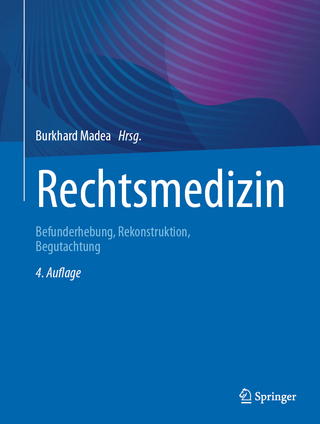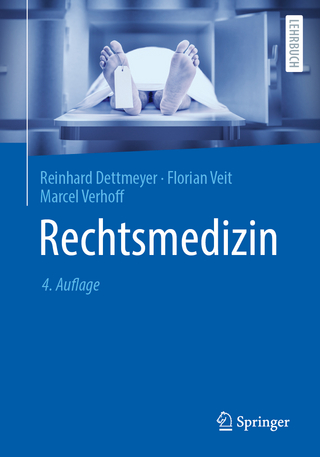
Investigating Infant Deaths
Seiten
2007
Crc Press Inc (Verlag)
978-0-8493-8204-8 (ISBN)
Crc Press Inc (Verlag)
978-0-8493-8204-8 (ISBN)
- Titel z.Zt. nicht lieferbar
- Versandkostenfrei innerhalb Deutschlands
- Auch auf Rechnung
- Verfügbarkeit in der Filiale vor Ort prüfen
- Artikel merken
Offers medico legal death investigators and law enforcement personnel with investigative techniques applicable to sudden unexpected infant deaths. This book defines the role of the investigator and explains the benefits of 'double-teaming' an investigation. It covers how to review medical records, social service records, and criminal histories.
It stands to reason that the most difficult cases to investigate are those in which the individual’s death was sudden, unexpected, and unexplained. Very few deaths occur where the deceased has no significant medical history, no trauma, no significant autopsy findings, and very little social history in which to investigate. Infant deaths almost always fit this category, making them consistently the most complicated and challenging deaths to investigate.
Investigating Infant Deaths draws on the expertise of a forensic nurse and member of the CDC core team for the Sudden Unexpected Infant Death Investigation Reporting Form to provide medicolegal death investigators and law enforcement personnel with investigative techniques applicable to sudden unexpected infant deaths. Beginning with a general state-of-the-field, the author defines the role of the investigator and explains the benefits of “double-teaming” an investigation. The book emphasizes the importance of timing and gives crucial tips for examining the incident scene and performing an initial post-mortem external exam. Specific instruction regarding the “art” of interviewing the grieving parents and how to follow up with families gives investigators an important edge when autopsy findings are slim. Additional chapters cover how to use a doll re-enactment and how to review medical records, social service records, and criminal histories. It also illustrates how to set up task forces including State Child Fatality Teams and an Investigative Child Death Review at the local level. Case studies are used throughout the book to give investigators real-life examples of the techniques at work.
Presenting a workable approach that may facilitate a re-evaluation of current protocols, Investigating Infant Deaths provides the tools for continued improvement that will ensure all infant deaths are investigated thoroughly and thereby help prevent future premature infant deaths from occurring.
It stands to reason that the most difficult cases to investigate are those in which the individual’s death was sudden, unexpected, and unexplained. Very few deaths occur where the deceased has no significant medical history, no trauma, no significant autopsy findings, and very little social history in which to investigate. Infant deaths almost always fit this category, making them consistently the most complicated and challenging deaths to investigate.
Investigating Infant Deaths draws on the expertise of a forensic nurse and member of the CDC core team for the Sudden Unexpected Infant Death Investigation Reporting Form to provide medicolegal death investigators and law enforcement personnel with investigative techniques applicable to sudden unexpected infant deaths. Beginning with a general state-of-the-field, the author defines the role of the investigator and explains the benefits of “double-teaming” an investigation. The book emphasizes the importance of timing and gives crucial tips for examining the incident scene and performing an initial post-mortem external exam. Specific instruction regarding the “art” of interviewing the grieving parents and how to follow up with families gives investigators an important edge when autopsy findings are slim. Additional chapters cover how to use a doll re-enactment and how to review medical records, social service records, and criminal histories. It also illustrates how to set up task forces including State Child Fatality Teams and an Investigative Child Death Review at the local level. Case studies are used throughout the book to give investigators real-life examples of the techniques at work.
Presenting a workable approach that may facilitate a re-evaluation of current protocols, Investigating Infant Deaths provides the tools for continued improvement that will ensure all infant deaths are investigated thoroughly and thereby help prevent future premature infant deaths from occurring.
Charleston County Coroner's Office, North Charleston, SC, US
Investigating Infant Deaths: Why Is It Important?, Maternal and Infant Health: What Investigators Should Know, The Investigation Begins: Timing Is Everything, First Responders: Their Observations Are Important, Initial Postmortem External Assessment, Infant Death Scene Investigation: It Tells a Story, The Art of Interviewing, Doll Reenactment with Scene Walk-Through, The Forensic Autopsy: The Investigator’s Role, Records Review: Let the Records Speak, Child Death Review: It Brings It All Together, Family or Caregiver Follow-Up and Referral, Where Do We Go from Here?, Index
| Erscheint lt. Verlag | 7.5.2007 |
|---|---|
| Zusatzinfo | 14 Tables, black and white; 52 Illustrations, black and white |
| Verlagsort | Bosa Roca |
| Sprache | englisch |
| Maße | 156 x 234 mm |
| Gewicht | 620 g |
| Themenwelt | Medizin / Pharmazie ► Medizinische Fachgebiete ► Pädiatrie |
| Studium ► 2. Studienabschnitt (Klinik) ► Rechtsmedizin | |
| ISBN-10 | 0-8493-8204-1 / 0849382041 |
| ISBN-13 | 978-0-8493-8204-8 / 9780849382048 |
| Zustand | Neuware |
| Haben Sie eine Frage zum Produkt? |
Mehr entdecken
aus dem Bereich
aus dem Bereich
Befunderhebung, Rekonstruktion, Begutachtung
Buch | Hardcover (2024)
Springer (Verlag)
199,99 €
Ein praktisches Handbuch für Ärzte und Juristen
Buch | Hardcover (2020)
Urban & Fischer in Elsevier (Verlag)
240,00 €


